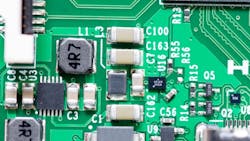There’s a rumor going around, centered in Germany, that we’re now in our fourth Industrial Revolution. According to this rumor (in which I believe):
1. The first Industrial Revolution started in England in the 18th century. Think: mechanical looms.
2. The second centered on electrically-powered mass production, near the start of the 20th century. Think: Henry Ford and assembly lines.
3. The third is electronics and robotics and IT. Think: computers enter the office and manufacturing space.
4. The fourth is about harnessing, finally, the power of data. It’s about big data and predictive analytics and artificial intelligence, and it includes Smart Manufacturing. Early computers did what humans could do, but faster and better. Smart Manufacturing puts machines in the business of real decision-making—through calculations outside the range of human capabilities. Think: the data tells us what to do.
With Smart Manufacturing, the Data Tells us What to do.
Or to state it more dramatically, the computers control the process! While the smartest person in the room is still human (depending on how we define ‘smart’), machines can tell us things we don’t know and could not figure out on our own.
Say we’re talking about maintaining aircraft engines. In the old days, all we could do as humans was:
- Analyze how frequently they failed, and work to a preventative maintenance schedule cycle slightly shorter than the average of that period
- Wait for it to fail.
- Fix it.
It’s not optimal. But now, with sensors providing considerably more data about the engine, and software that is able to analyze that data in a highly sophisticated manner, we can have a much more precise idea of when each engine needs maintenance, and what type.
Better data and better analytics give us considerably more insight into the root cause of any specific shop floor event or process. And the root cause makes all the difference, in terms of increasing efficiency and quality, while decreasing cost.
Smart Manufacturing & The Industrial Internet of Things
The Industrial Internet of Things (IIoT) applies Internet of Things technology to manufacturing. IIoT incorporates machine learning and big data, harnessing sensor data and automation. The big idea behind IIoT is that smart machines are better than humans at capturing, analyzing and communicating [some types of] data. Manufacturers can pick up on inefficiencies and issues sooner, and find answers faster.
A major part of the story is the drop in technology costs. The emergence of cheap connected devices, coupled with the availability and affordability of mass computing power, has been the biggest driver of Smart Manufacturing.
It All Hinges on Visibility
Visibility is the driver of ROI, in manufacturing efficiency. And Big Data and Smart Manufacturing have taken visibility to a whole new more granular level. In real time.
With greater visibility of the real workings, your shift supervisors and operators can make better, more informed decisions, all day long. There are all kinds of possibilities: messages on their phones; displays on a monitor; an overhead dashboard that highlights your six key processes. It’s all about visibility.
One Last Point About Smart Manufacturing
Just to clarify—you can, in theory, run a Smart Manufacturing plant that has no connection to the Internet. Essentially, Smart Manufacturing is about using analytics and Big Data to run your plant better (think: the data tells you what to do!).
So Smart Manufacturing isn’t really about the Internet. It’s about collecting and crunching data to make more informed decisions.
About the Author

Andrew Waycott
Chief Operating Officer and Chief Technology Officer
Andrew Waycott is the Chief Operations Officer and Chief Technology Officer at Factora, a company of manufacturing consultants who use software to help factories achieve their full potential by raising the visibility of key information on the shop floor so that plant management, employees and company leadership can run more efficient manufacturing systems.
For the past two decades, on a global scale, Andrew has nurtured his passion for manufacturing, technology and its impact on efficiencies to the benefit of clients whose manufacturing processes have exhibited an untapped or business-critical growth opportunity.
In 2013, he was one of the architects behind the successful merger of SlimSoft Solutions and System Technologies for Industry and the ensuing creation of Factora. He currently serves on the board of directors of not-for-profit Manufacturing Enterprise Solutions Association (MESA) International.
For more information on Andrew and Factora, visit www.factorasolutions.com or check out his LinkedIn profile here.
FOLLOW Andrew and Factora on Twitter